3 1 8 Receipt Paper: Solving Common Issues and Choosing the Right Roll for Your Business
1. What Exactly Is 3 1 8 Receipt Paper and Why Is It Important?
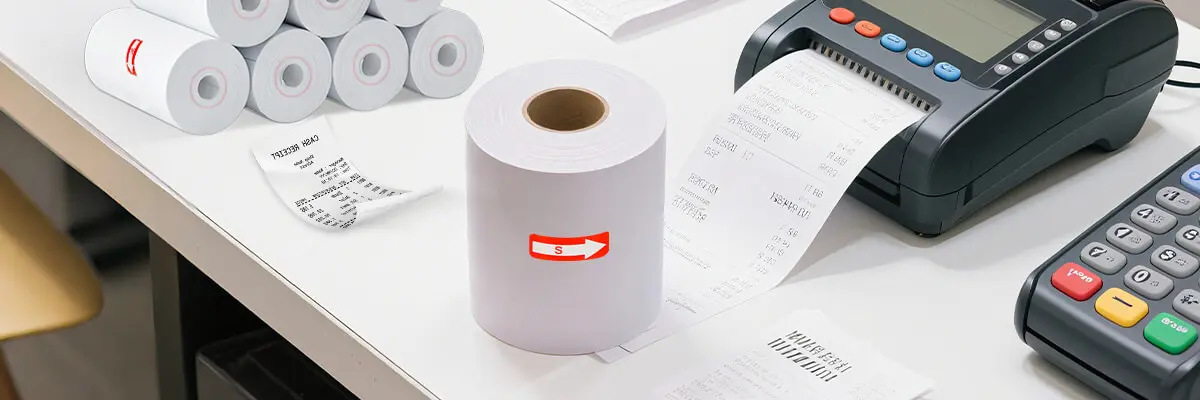
● Professional printouts: Maintains steady margins, avoids dropping components of logos/text.
● Operational performance: Reduces roll adjustments and printer malfunctions, saving time and fee.
2. How Do I Choose Between 3 1 8 x 230 Thermal Receipt Paper and Other Roll Lengths?
● Storage vs frequency: If you print low volumes, a shorter roll (e.G. One hundred fifty ft) might be less difficult to shop and healthy in small cabinets.
● Cost performance: Typically, the longer the roll, the lower the value in line with foot however simplest beneficial if you sincerely use it before expiration (thermal paper can degrade through the years).
2.1 Quick summary table:
Roll Length |
Best For |
Pros |
Cons |
150 ft |
Infrequent receipt printing |
Easier to store; quick swap |
Higher cost per foot |
230 ft |
High-volume retail/food ups |
Fewer swaps; better value |
Bulky; risk of devaluation if unused |
300 ft+ |
Very busy locations |
Max efficiency |
Too heavy; uncommon for desks |
3. Where can I order receipt paper from Sailingpaper?
3.1. Order Directly from Sailingpaper
● Why it’s great: Lower prices (5–10% cheaper than middlemen), custom printing, access to large volume orders, and overseas warehouses in Houston, Dubai, Riyadh, etc. www.szsailingpaper.com.
● How to buy: Visit their official Sailingpaper.com site, submit an inquiry form for the paper width/length you need. They’ll follow up via email/WhatsApp.
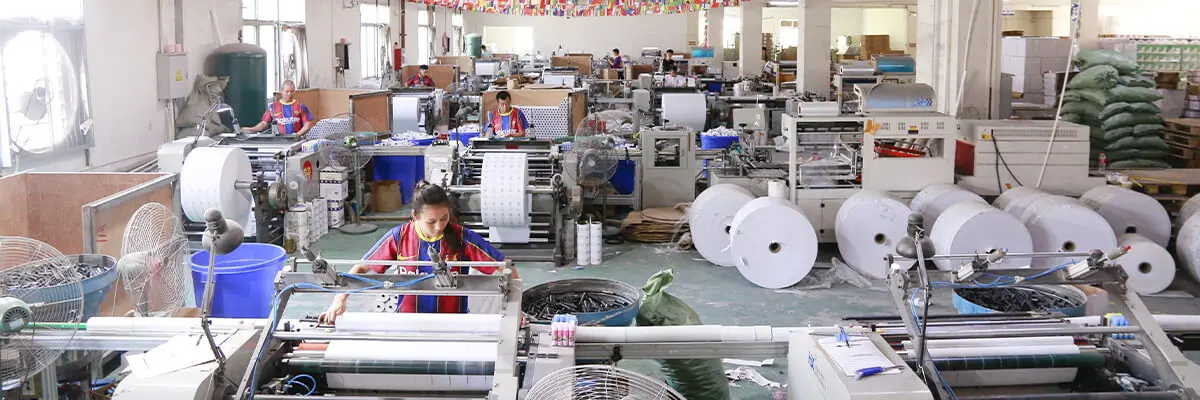
4. What Types of Receipt Paper Are Available and Which Suits Your Needs?
● No ink/toner required; heat printing creates text.
● Common sizes: 2 1/4 x 50' thermal receipt paper, 2 1/4 x 85 thermal receipt paper′, 3 1 8″ x 230′.
● Creates duplicates simultaneously useful for invoices, delivery, receipts.
● Good for record-keeping.
Feature |
Thermal Paper |
2-Ply Carbonless |
3-Ply Carbonless |
Printer Type |
Thermal POS printers |
Impact or dot-matrix printers |
Impact or dot-matrix printers |
Copies |
1 copy with printhead |
2 copies |
3 copies |
Cost |
Cheapest per copy |
Mid-range |
Highest per set |
Durability |
Sensitive to heat/light |
Durable handwritten/written copies |
Same as 2ply |
Use Case |
POS food receipts, tickets |
Invoices, delivery, proofs |
Multi-party docs |
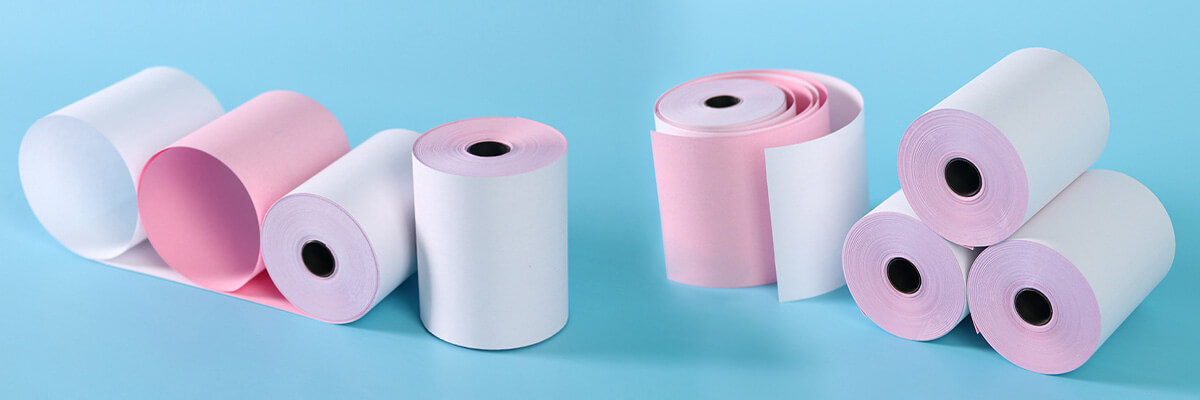
5. How Thick Should the Thermal Receipt Paper Thickness Be for Better Quality?
● 60–65 gsm (medium): Balanced choice, more durable, resist tears.
● 70–80 gsm (thick): Durable, great for faster printing, retains contrast better, ideal for busy environments.
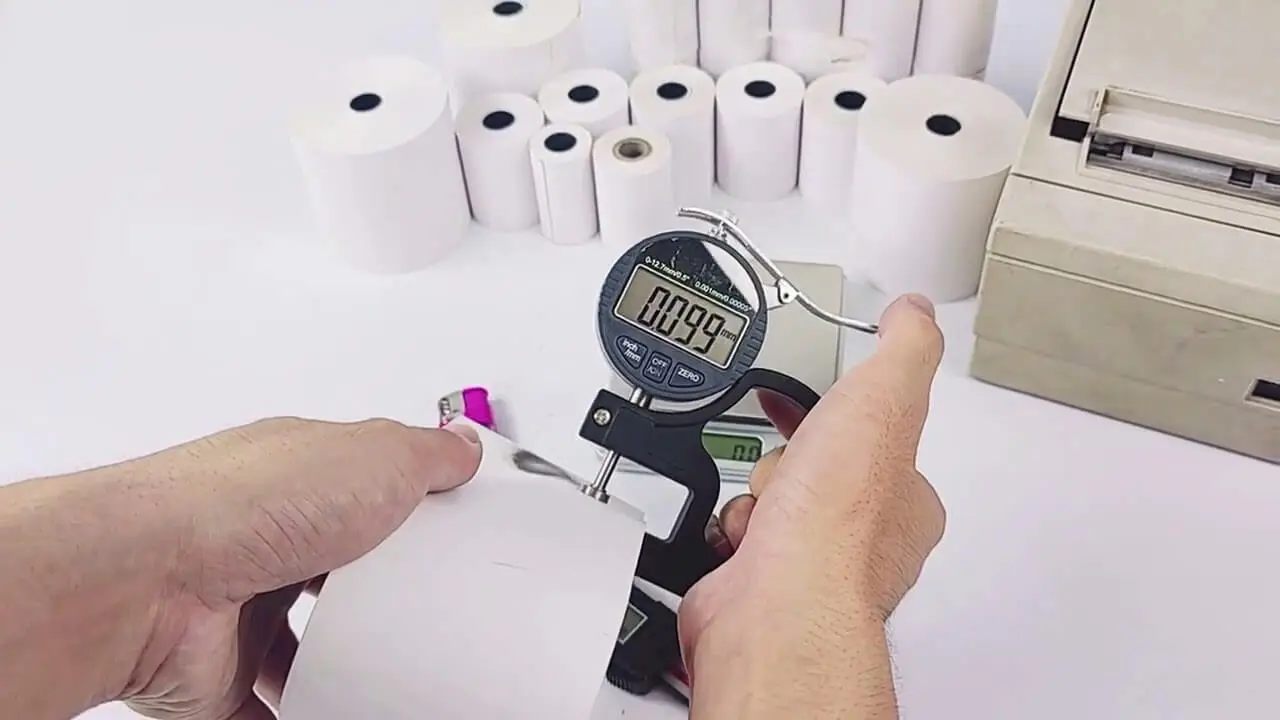
● Most restaurants and shops → 60–65 gsm.
● High-traffic environments (gas stations, supermarkets) → 70–80 gsm.
6. What Size Receipt Paper Do I Need 2, 3, or Standard?
● 3 1/8″ (≈79 mm): standard receipt paper in supermarkets, restaurants, larger POS systems.
● 2″ rolls: Less common unless you have a legacy or compact printer.
7. Can I Use Receipt Paper for Other Purposes Forms, Books, Blank Receipts?
● Receipt form paper: A4/drum-cut sheets used in impact printers to produce printer/handwritten hybrid formats.
● Blank paper receipts: Unprinted, blank thermal rolls useful if your printer prints logos/configuration automatically or if you want to print custom templates.
8. How to Solve Common Customer Receipt Paper Problems
8.1. Printer Jams and Misfeeds
● Solution: Verify width and core diameter. Clean rollers, keep labels printable ≤70 gsm for smoother feed.
8.2. Print Doesn’t Appear Clearly
● Solution: Increase print density in settings, use rolls with ≥60 gsm thickness. Avoid paper with self-cling residue or oils.
8.3. Copies Needed Customer, Merchant, Internal
● Solution: Switch from single thermal to 2-ply carbonless receipt paper for two copies, 3-ply for three. Works in impact-style printers.
8.4. Inventory Overspending
● Solution: Audit your POS printer model and usage. Order the exact paper width, length, and ply at once to reduce unit cost and wastage.
9. Final Tips When Selecting Receipt Paper
2. Choose appropriate thickness—go thick for busy environments.
3. Decide on copy needs—use thermal for single, carbonless for multi-copy.
4. Match roll length to usage—save small rolls if low extent; lengthy rolls if excessive extent.
5. Consider sustainability—BPA-free, recyclable alternatives are available.
Feature |
Thermal (3 1 8 x 230) |
2-Ply Carbonless |
3-Ply Carbonless |
Width |
3 1-8 |
Custom widths |
Custom widths |
Copies |
1 |
2 |
3 |
Thickness |
50–80 gsm |
Medium |
Medium |
Best Use Case |
Standard POS receipts |
Invoices, proofs |
Three-party docs |
Price per copy |
Lowest |
Mid |
Highest |
10. Conclusion
11. FAQs
You can purchase Sailingpaper receipt paper directly from their official website at www.szsailingpaper.com, or through B2B platforms like Sailingpaper , Made-in-China, and Global Sources. On their website, you can request a quote, samples, or place a custom order. If you’re located near their overseas warehouses (e.g., USA, UAE, Saudi Arabia), shipping will be faster.
2: What types of receipt paper does Sailingpaper offer?
Sailingpaper manufactures a wide range of paper types including:
● Thermal receipt paper rolls (e.g. 3 1/8″ x 230′, 2 1/4″ x 85′)
● BPA-free thermal paper
● 2-ply and 3-ply carbonless paper
● Custom printed receipt paper
● ATM, ECG paper
You should check your printer type and paper size before ordering.
3: Can I request free samples from Sailingpaper before buying?
yes, Sailingpaper offers free samples to businesses upon request. Just fill out the sample request form on their website or send them a message on Alibaba or other platforms. Make sure to include the size, core diameter, GSM (thickness), and shipping address.
4: What information should I provide when ordering receipt paper?
To get the correct paper and a precise quote, provide:
● Roll width (e.g., 80mm or 57mm)
● Roll length (e.g., 230 feet or 85 feet)
● Core size (e.g., 13mm or 17mm)
● Paper weight (e.g., 55gsm, 70gsm)
● Type (thermal or carbonless)
● Quantity needed
● Delivery location
This helps avoid delays or mismatched orders.
5: How long does shipping take when ordering from Sailingpaper?
Shipping time depends on your location and whether the order ships from their main factory (China) or one of their overseas warehouses. Approximate timelines:
● From China: 7–15 days (air), 20–35 days (sea)
● From overseas warehouse: 2–5 days domestic shipping
Ask their sales team to confirm the closest warehouse to you.






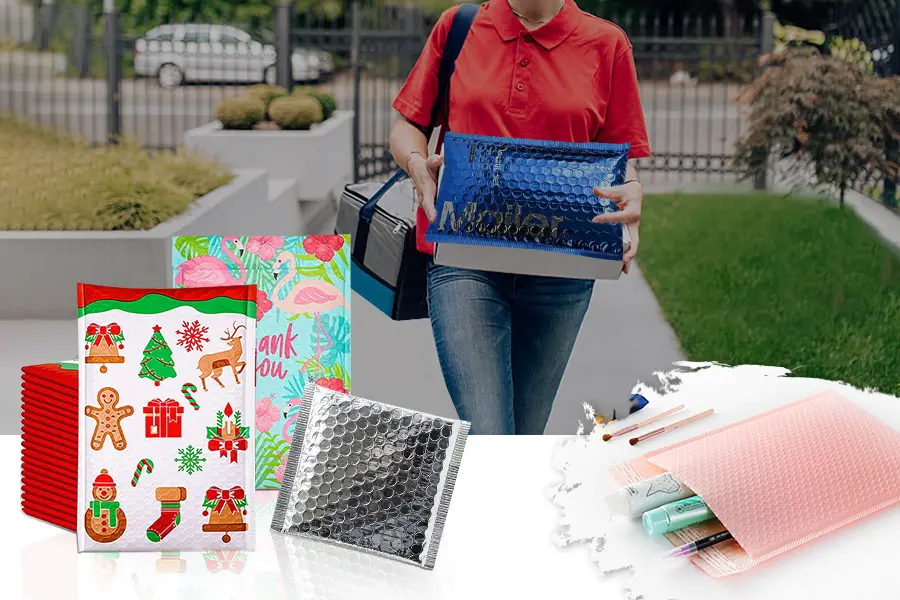 Thermal labels
Thermal labels